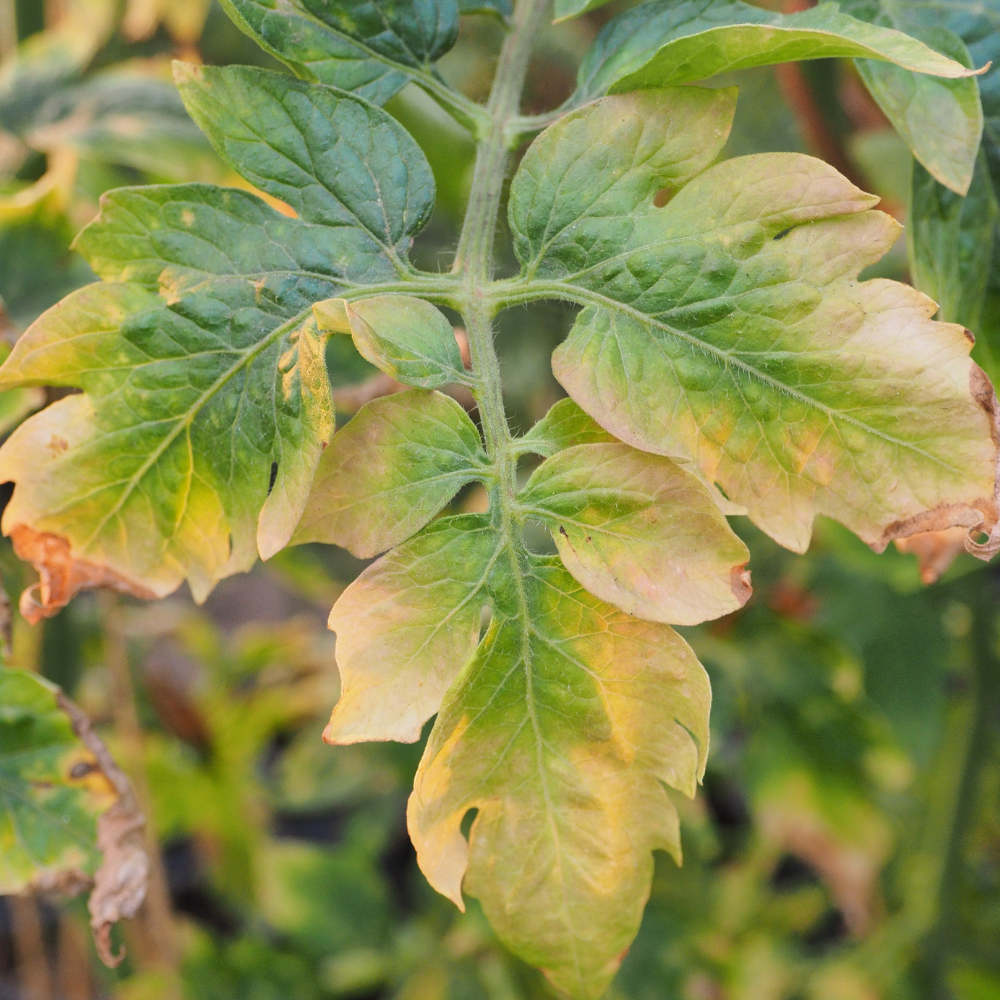Aquaponics is an ingenious system that combines fish farming and plant cultivation. But as with any agricultural system, plants can sometimes develop nutritional deficiencies.
Deficiencies in aquaponics
14 September 2025

Aquaponics is an ingenious system that combines fish farming and plant cultivation. But as with any agricultural system, plants can sometimes develop nutritional deficiencies.
Aquaponics is based on a virtuous cycle : the fish feed the plants with their waste, and the plants purify the water for the fish. This virtuous circle is practiced in a soilless system with the fish's water as the only basic nutritional source for the plants. Thus, imbalances can appear and the plants, true indicators of the system's health, sometimes show signs of weakness linked to nutritional deficiencies.
Understanding why these deficiencies occur, learning to identify their symptoms, and knowing how to correct them is essential to ensuring the sustainability of the system. Far from being inevitable, deficiencies in aquaponics are actually valuable signals that, when properly interpreted, allow for adjustment of the balance and increased production efficiency.

Although fish and their waste provide a good portion of the nutrients plants need, this is not always enough to cover all of their needs. Several factors can explain the occurrence of deficiencies. A fish population that is too low leads to insufficient nutrient production, which directly limits the fertility of the system. An inadequate fish diet is another common cause : if their food lacks diversity or quality, the waste produced will not contain enough of certain elements essential to plants.
Water pH also plays a determining role. When it is too high or too low, some nutrients, although present, become indigestible to the roots. This is called nutrient lockout : plants are not actually lacking nutrients, but they cannot absorb them. Finally, technical problems, such as poor water circulation, insufficient oxygenation, or insufficient filtration, can accentuate these imbalances and hinder crop growth.

Certain deficiencies are particularly common in aquaponics and manifest themselves through characteristic symptoms that are important to recognize.
Iron deficiency is probably the most common. It manifests itself as a marked yellowing of young leaves, while the veins remain green. This phenomenon, called iron chlorosis, is often linked to a pH that is too high, which blocks iron assimilation. Even if this mineral is present in the water, plants are no longer able to absorb it. It is therefore important to maintain your pH between 6 and 7.5. If this is not enough, you can use DTPA 11% chelated iron, which is an ideal solution : it remains stable up to neutral pH, does not alter the color of the water, and is ideal for aquaponic systems.
Potassium is also a common source of imbalance. When it's deficient, leaves develop dried or burnt edges, and stems become more fragile, making plants vulnerable to disease and climate change. To correct this deficiency, adding potassium bicarbonate is particularly beneficial, as it also acts as a pH regulator.

Calcium is also essential for the cellular structure of plants. When it's lacking, we see deformed leaves, fragile young shoots, and, in fruit crops like tomatoes or peppers, scabs. To solve this problem, it's recommended to remineralize the water by adding calcium carbonate, which strengthens both plant health and system stability.
Finally, magnesium can also be lacking. Its deficiency results in yellowing between the veins of older leaves, while younger shoots retain their green color. In this case, adding magnesium sulfate, better known as Epsom salt, can quickly and effectively restore balance.

Correcting a deficiency is possible, but it's always simpler and more sustainable to anticipate them. The first precaution is to regularly monitor the water's pH. Maintaining it between 6.5 and 7 ensures optimal nutrient availability and promotes harmonious assimilation by plants. This monitoring must be regular because even a slight variation can be enough to disrupt the balance.
Fish nutrition is another key factor. A varied and high-quality diet results in nutrient-rich excrement, which directly benefits crops. Investing in a balanced fish diet is therefore an investment in plant health and the stability of the entire system.

Daily observation remains the most effective prevention tool. Plants constantly communicate through their appearance. Yellowing leaves, deformed stems, or slowed growth are all warning signs that must be decoded. The faster the response, the simpler the correction, and the less disrupted the system. Finally, supplements should always be applied sparingly. An excess of nutrients can be as problematic as a deficiency : it can unbalance the ecosystem, stress fish, and weaken bacterial flora. Proceeding in small doses, observing changes, and adjusting gradually is the best strategy for maintaining a lasting balance.
Aquaponics deficiencies shouldn't be seen as insurmountable obstacles, but as valuable signals. Iron, potassium, calcium, and magnesium are the most commonly affected nutrients, and each exhibits distinct symptoms that quickly become familiar to the attentive eye. By learning to recognize them, understand their causes, and accurately correct them, you can turn every difficulty into an opportunity for improvement.
Aquaponics is above all a lesson in balance and observation. The more you take the time to listen to your plants, monitor your parameters, and intervene appropriately, the more you will develop true practical expertise. It is this daily vigilance that makes the difference between a fragile and unstable system and a productive, resilient, and sustainable ecosystem. Deficiencies are therefore not inevitable: on the contrary, they are a sign that nature is speaking to you and guiding you towards a better understanding of your installation.
Greenhouses & Aquaponics Kits
Our greenhouses and kits dedicated to aquaponics. Get started with ease !
Plant Universe
Substrates, Seeds, Fertilizers...
Fish Universe
Food, Nets, Decorations...
Equipment Universe
Pumps, Heaters, Lighting...
BOOKS Universe
Books on Aquaponics